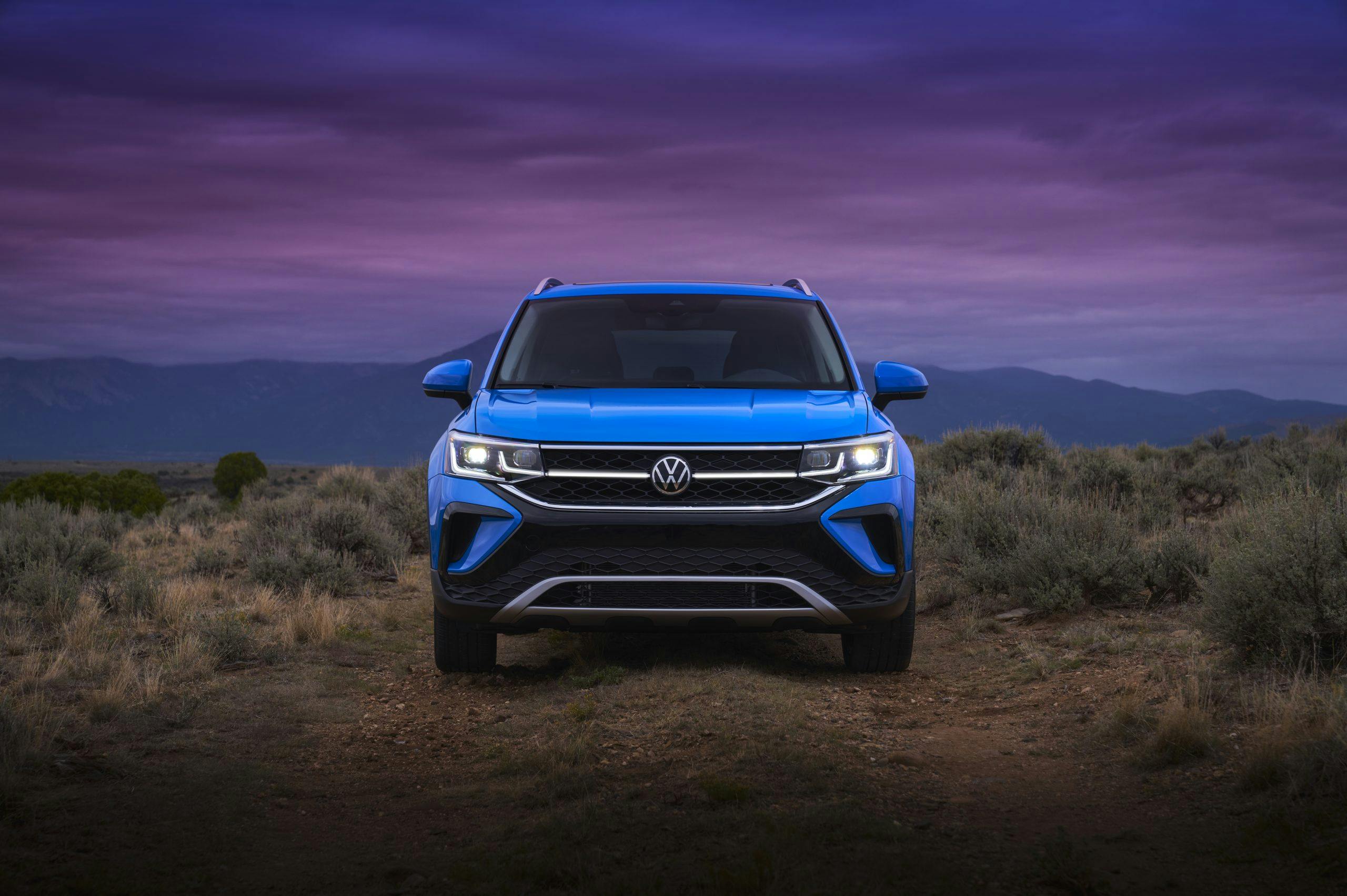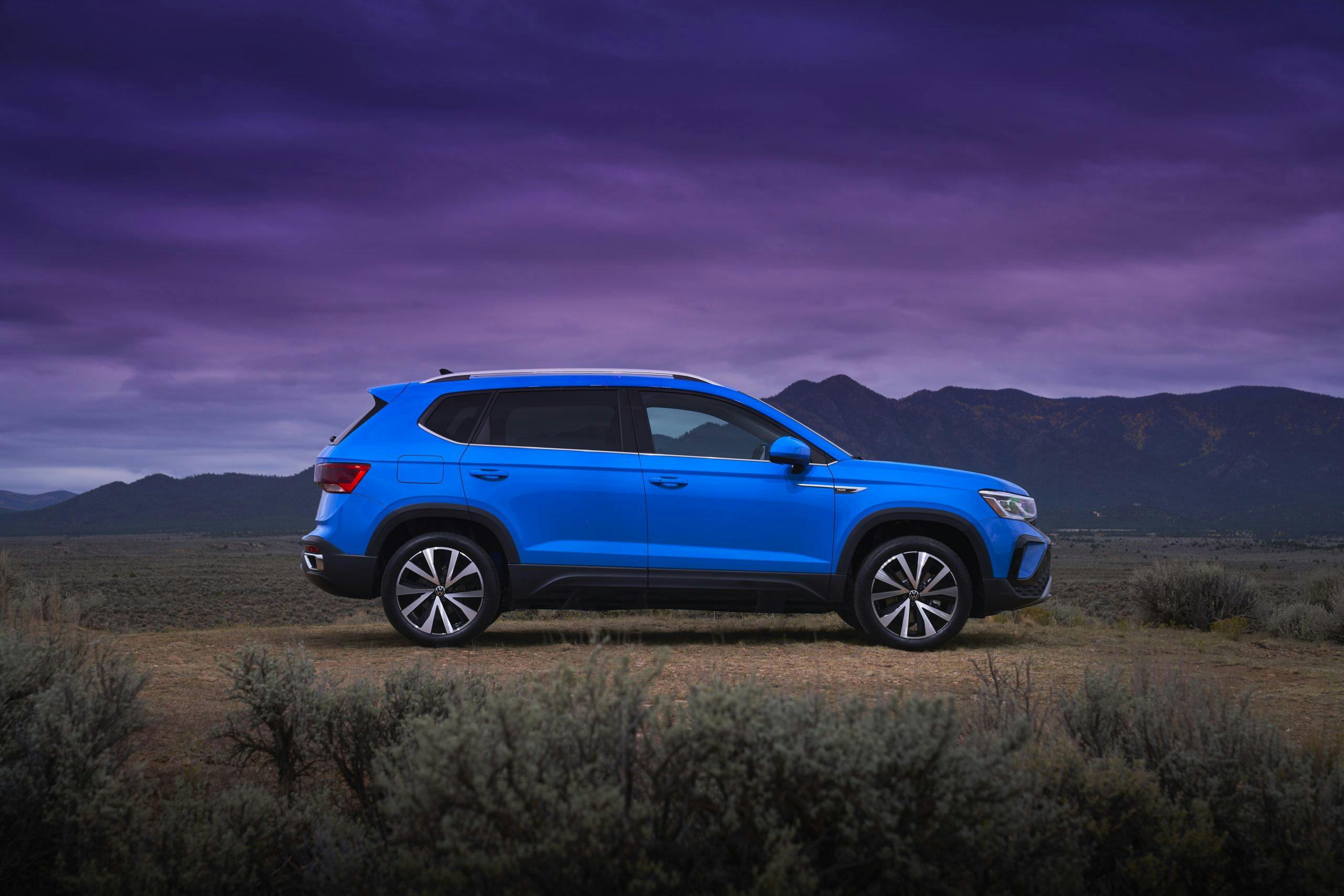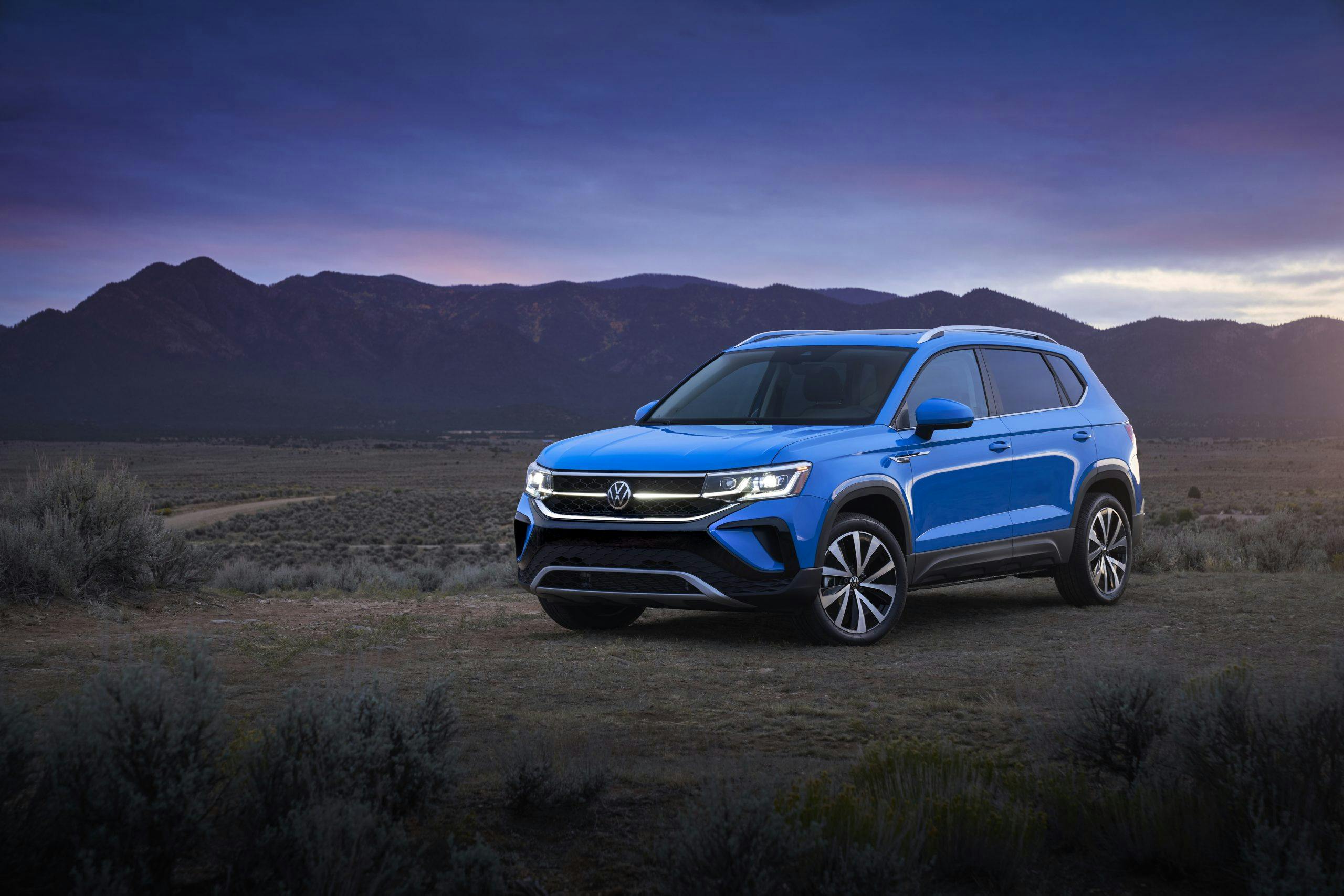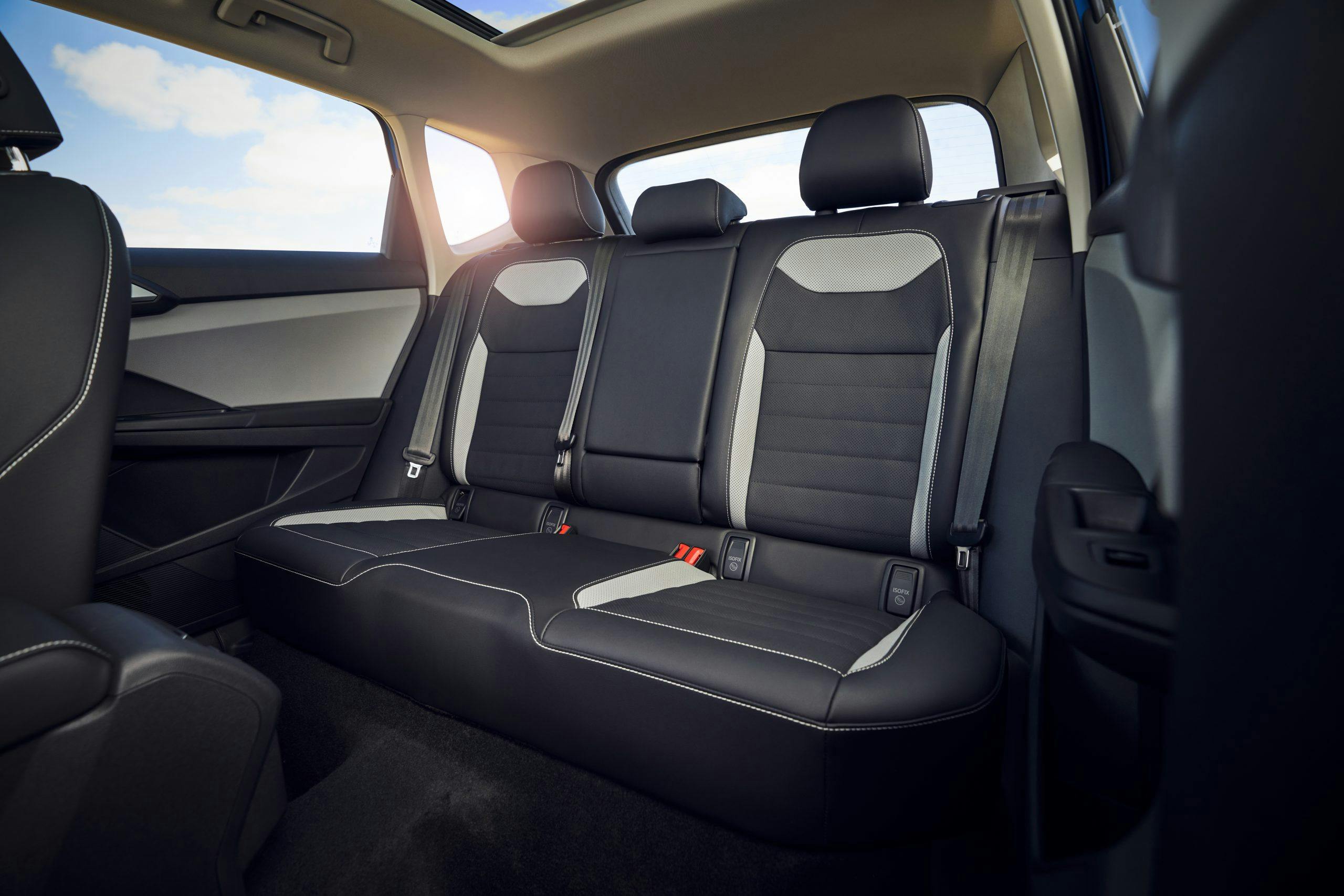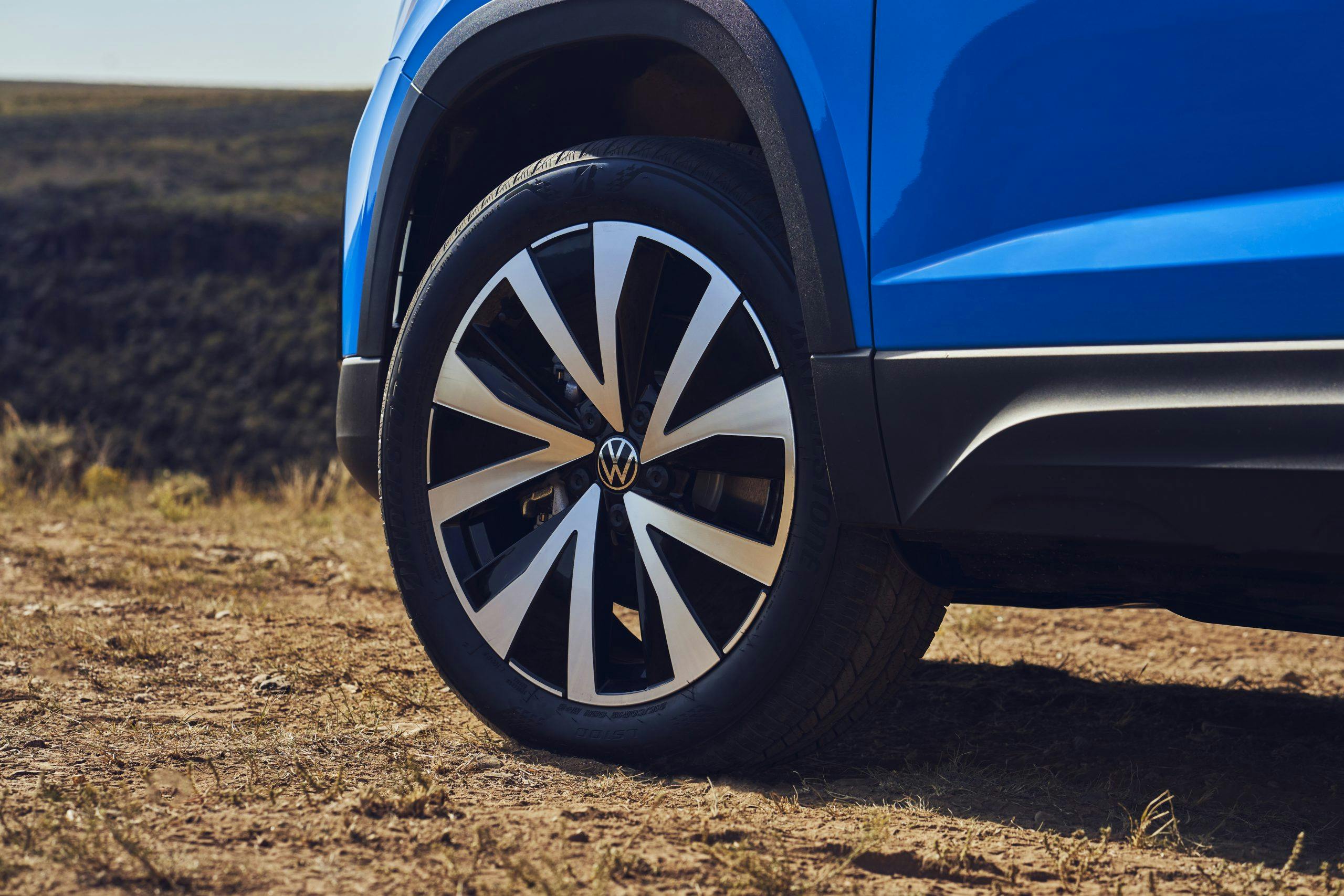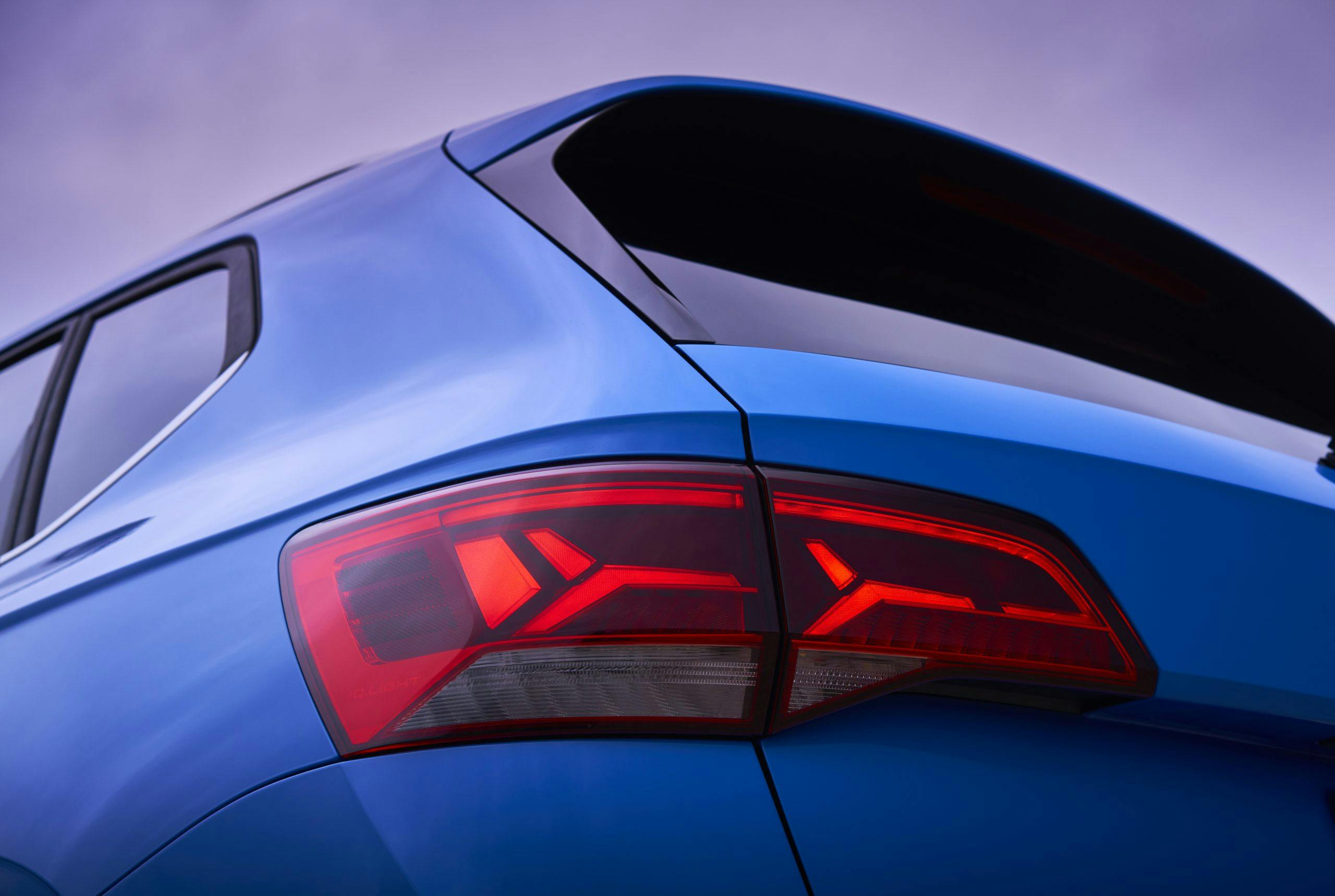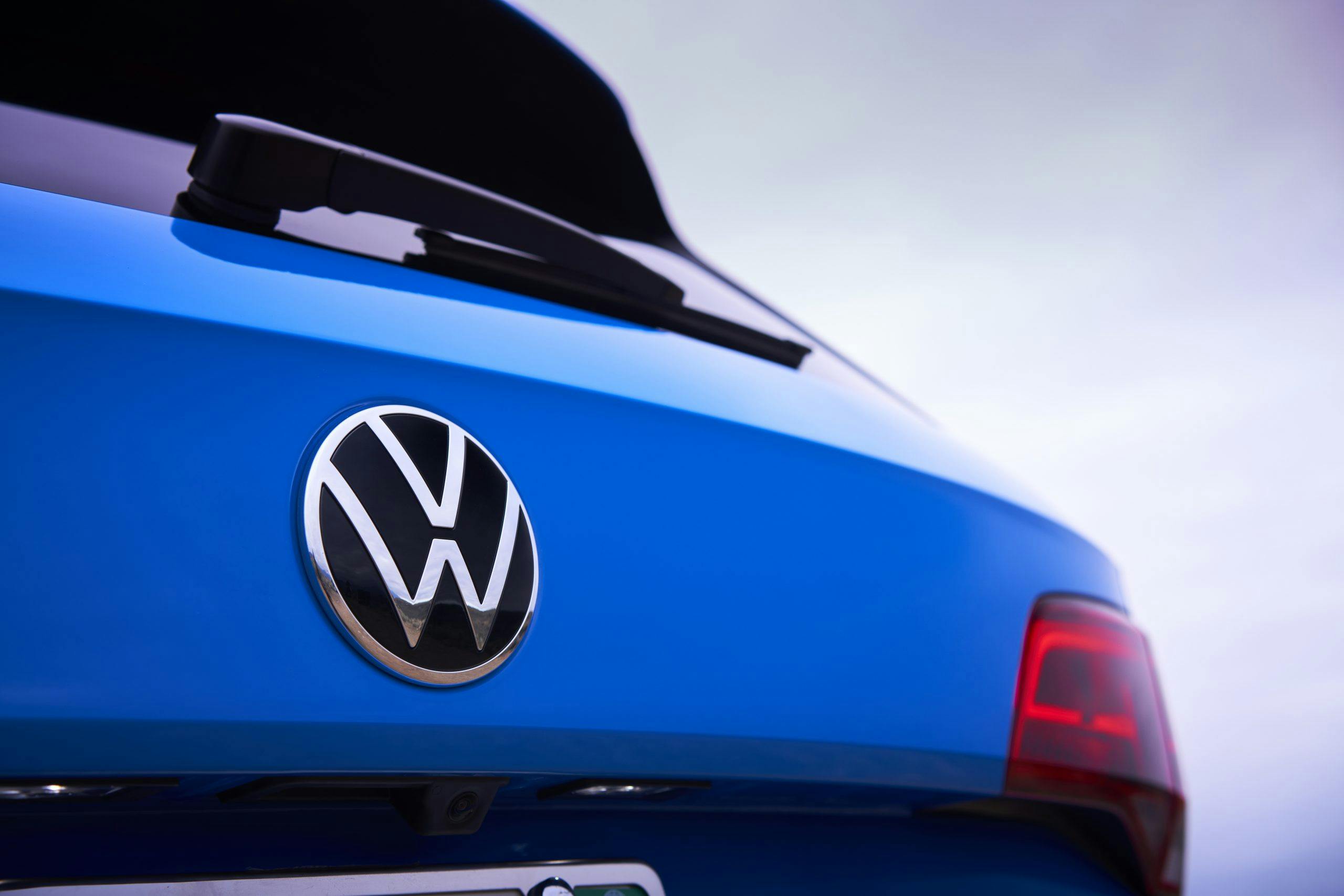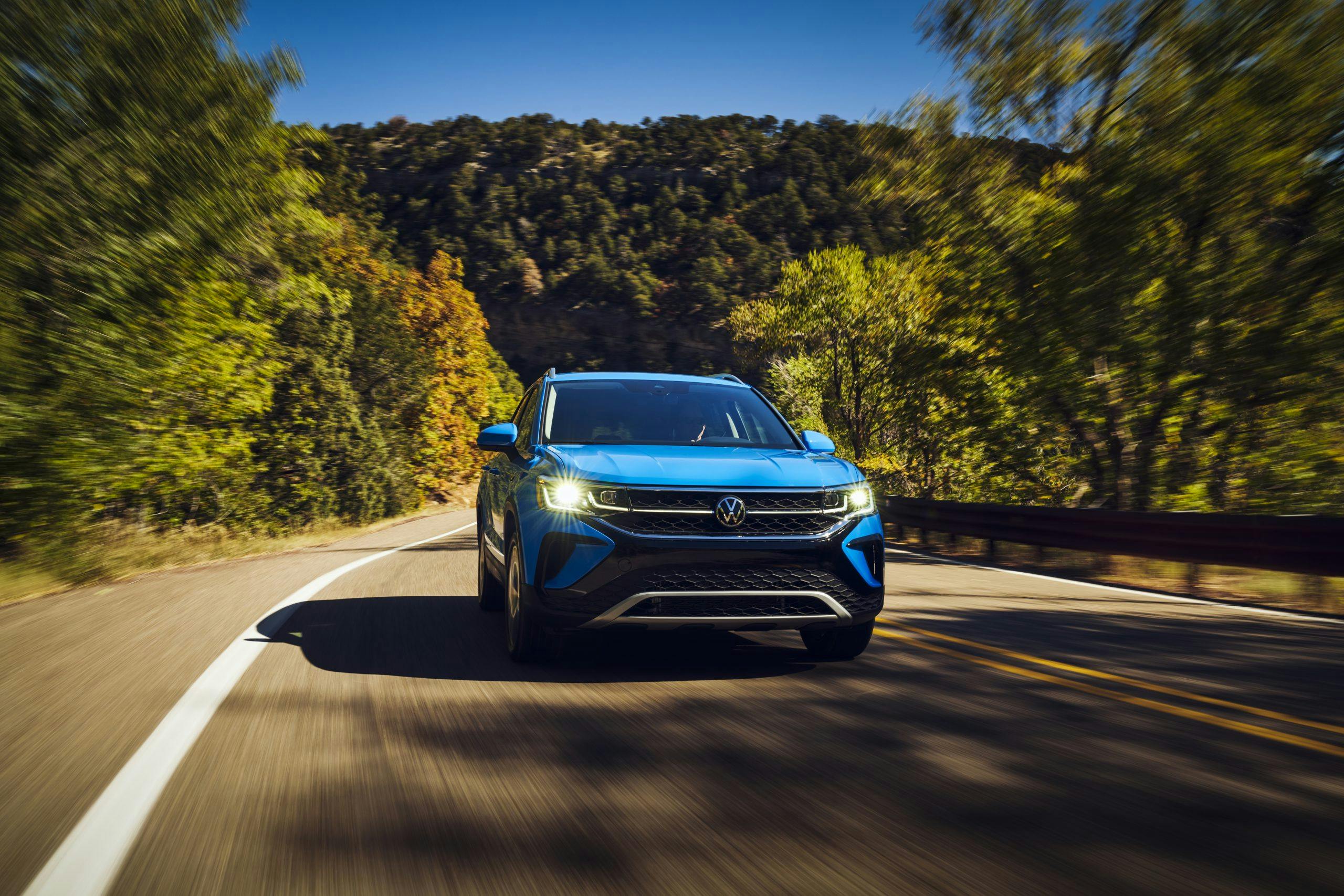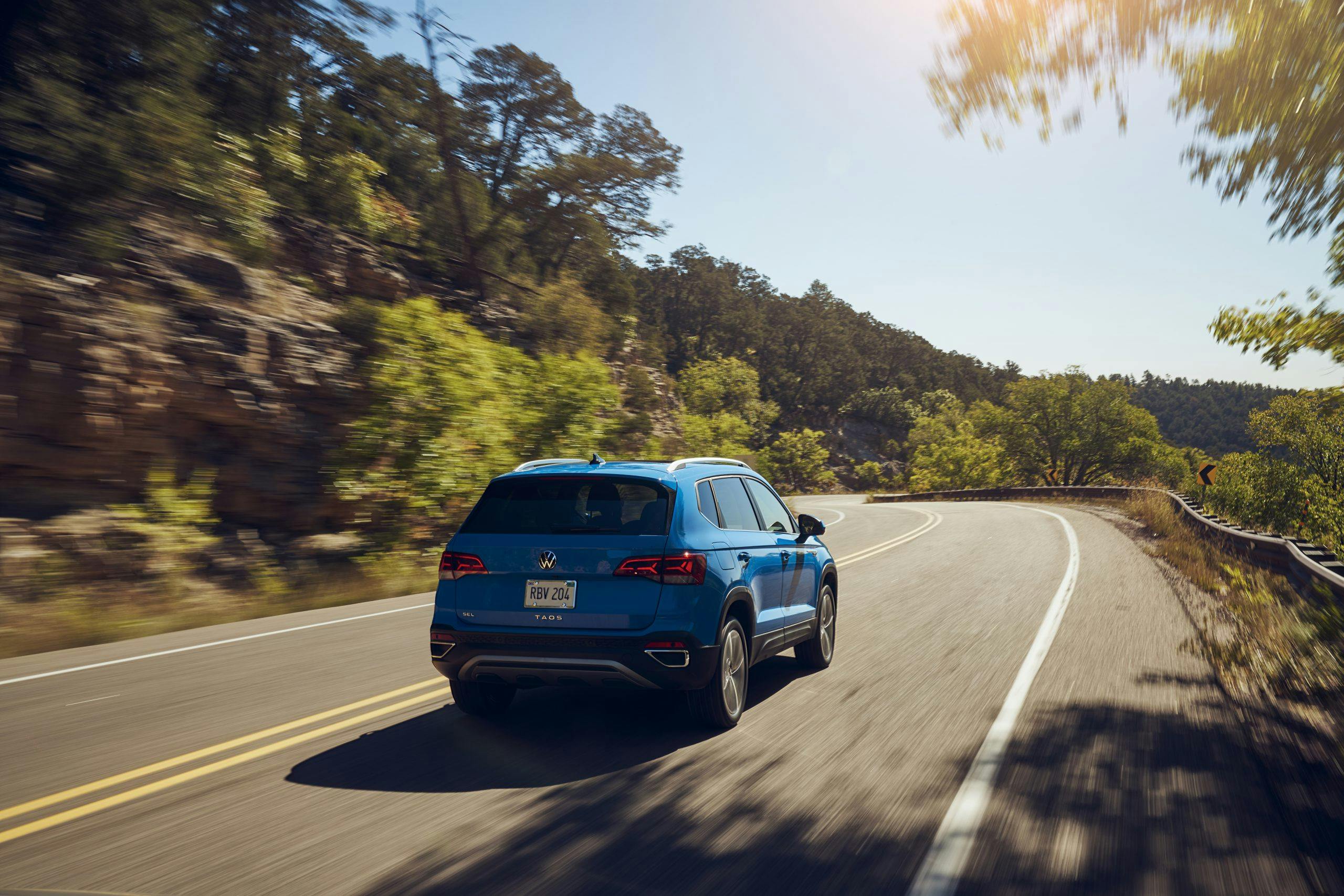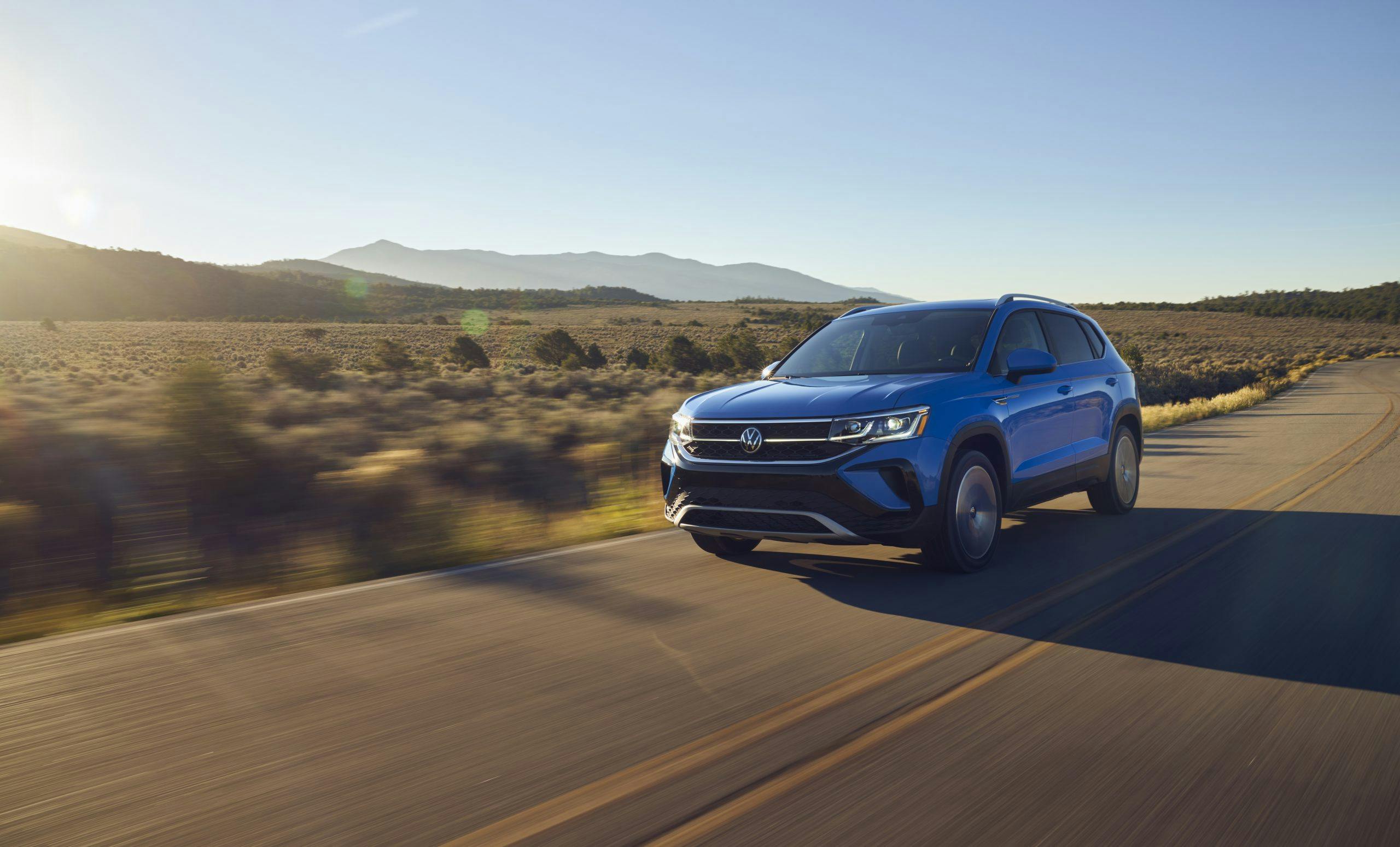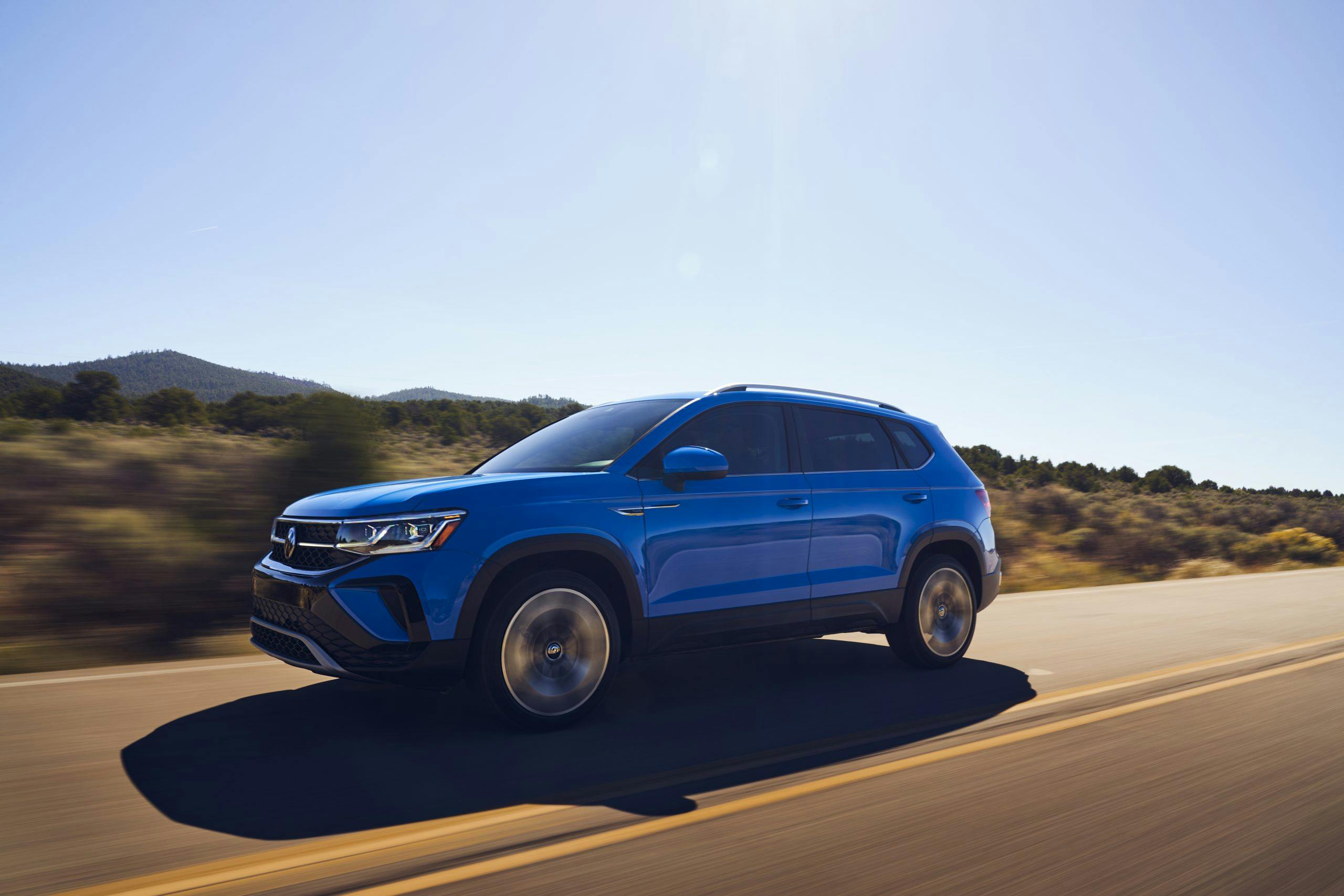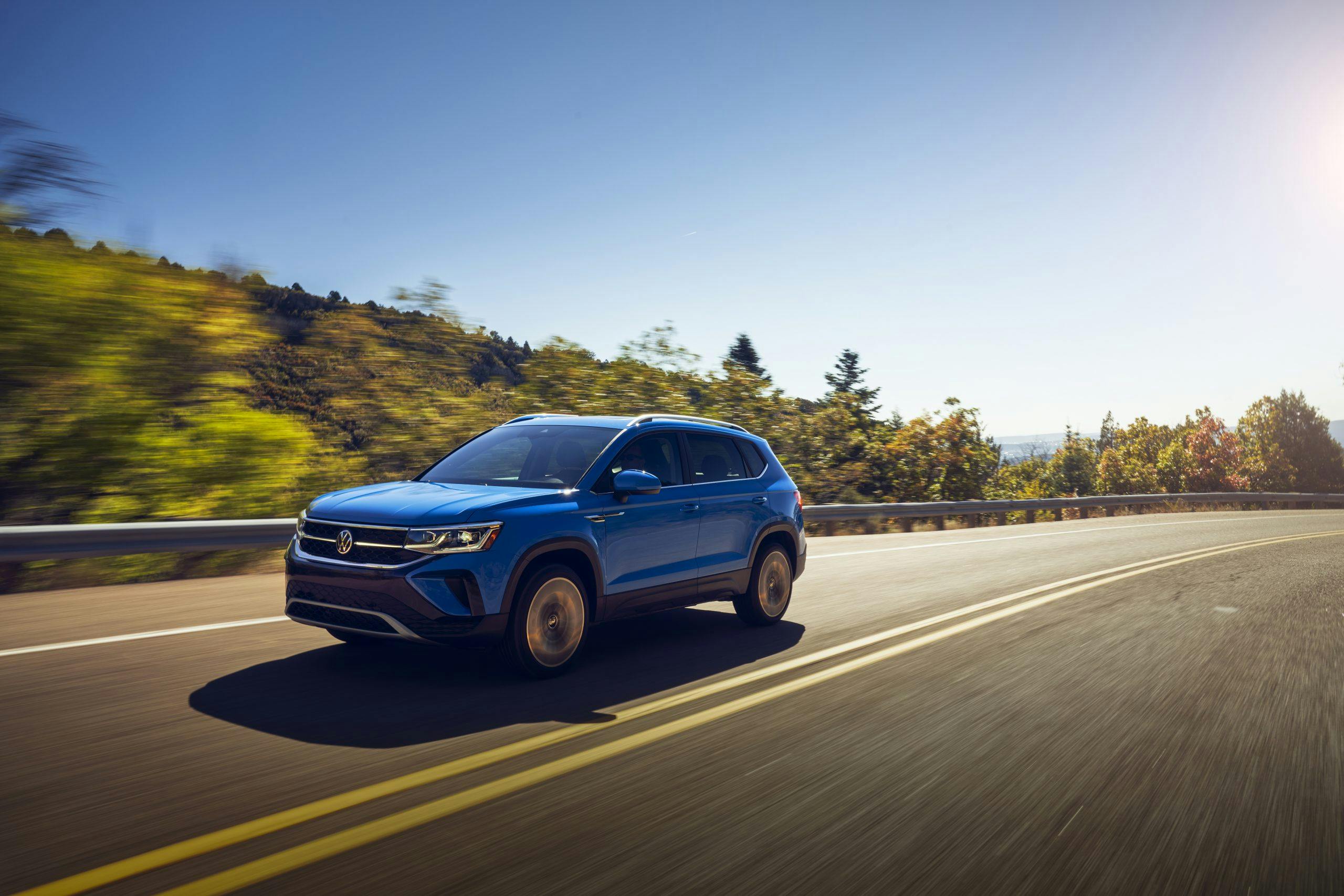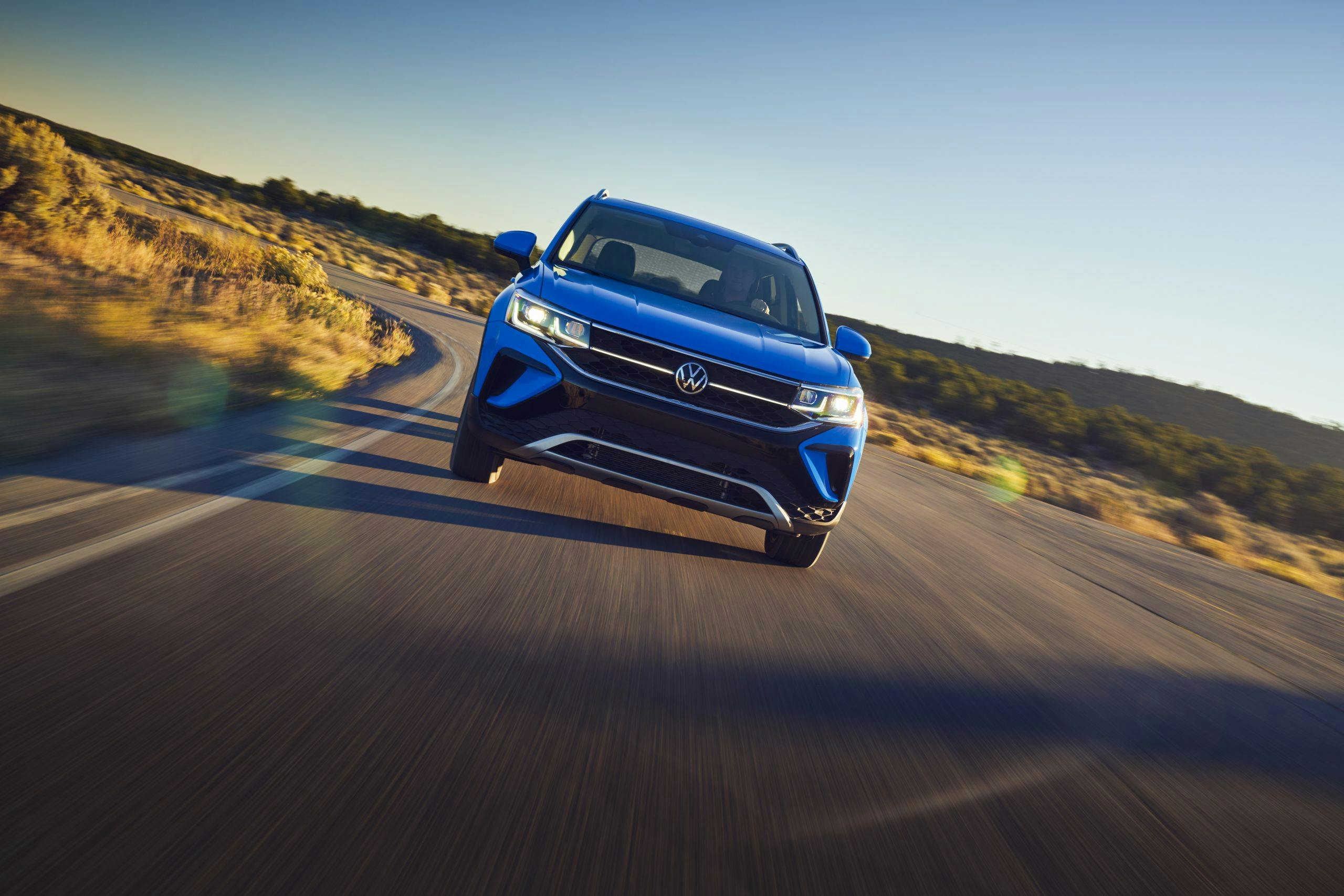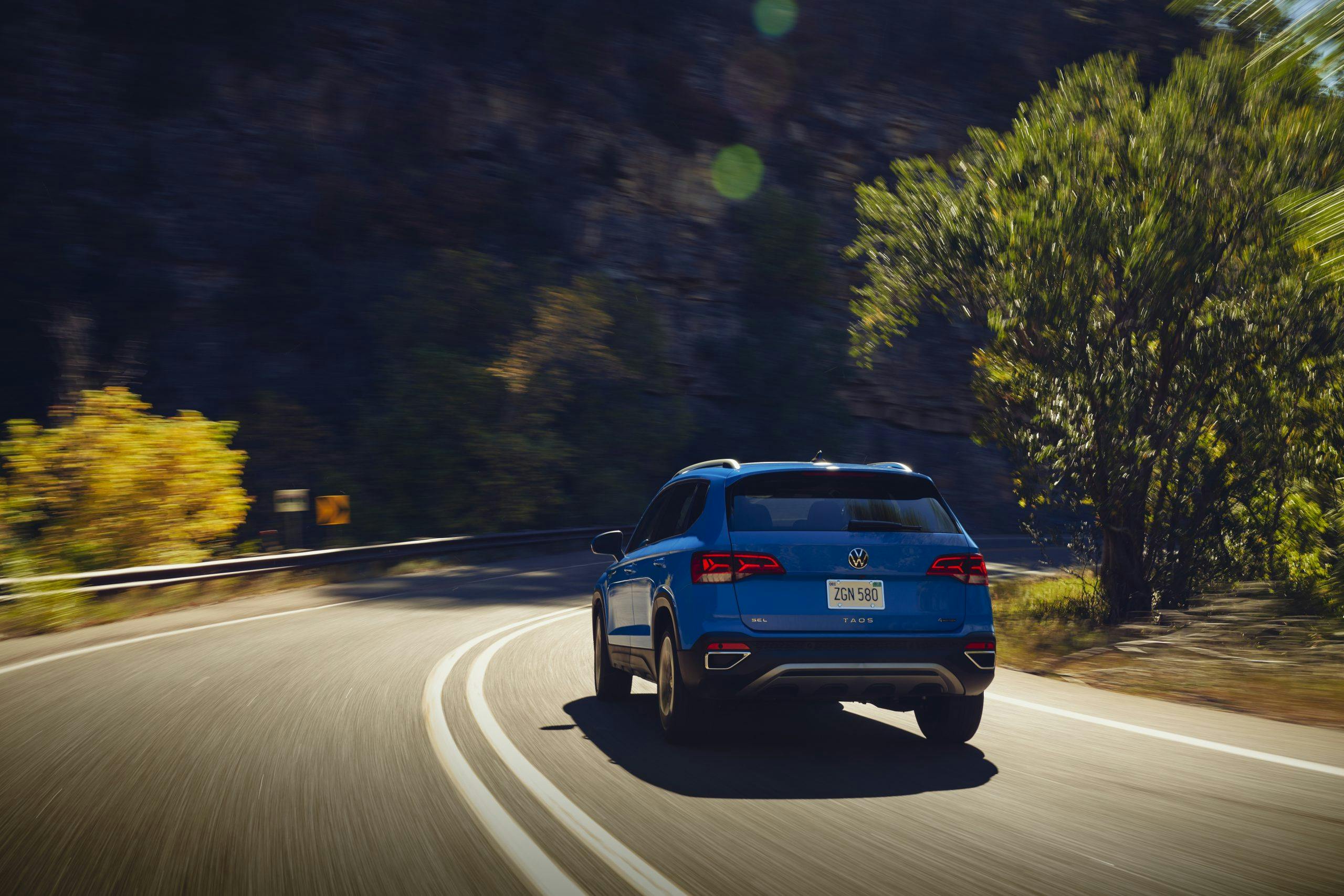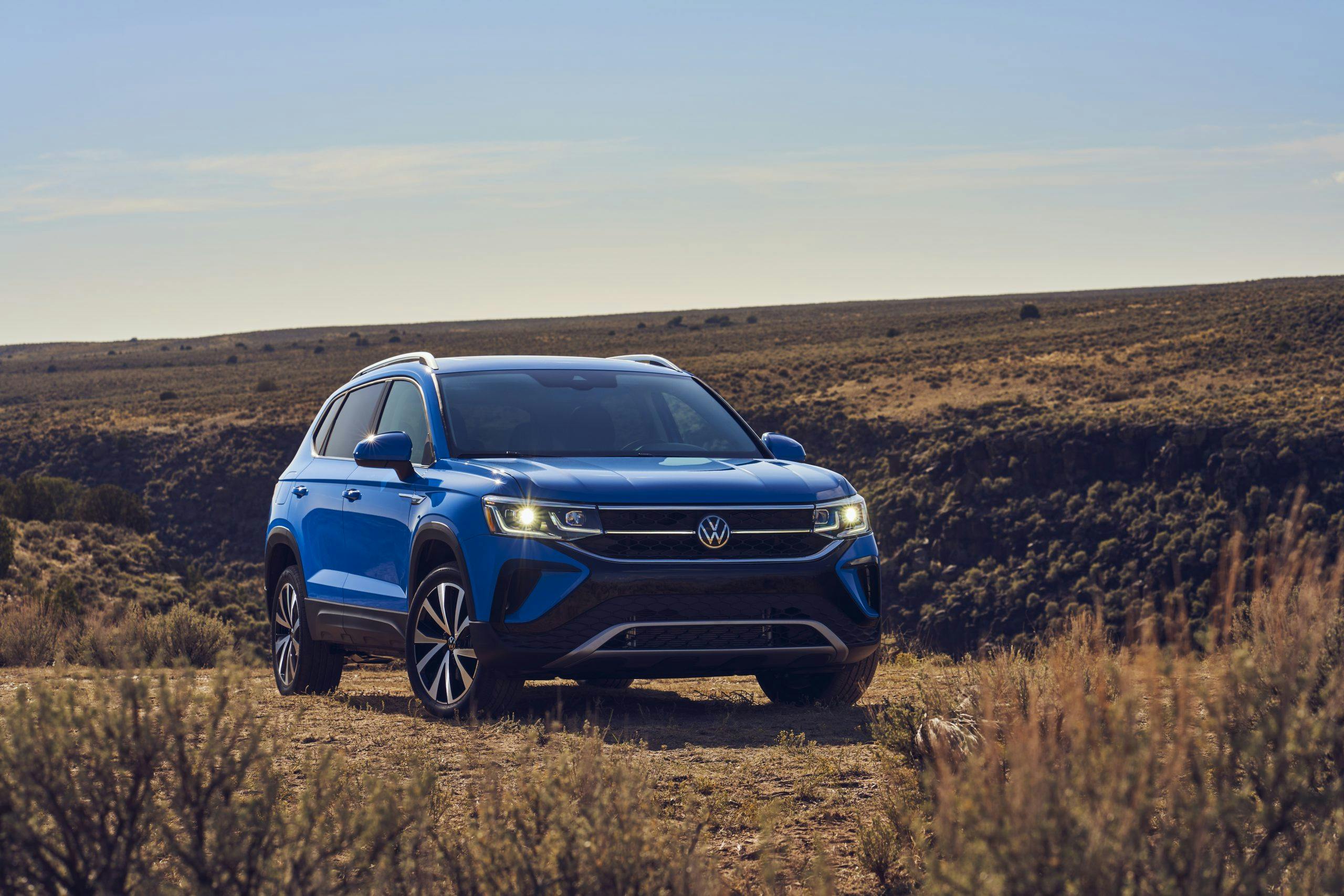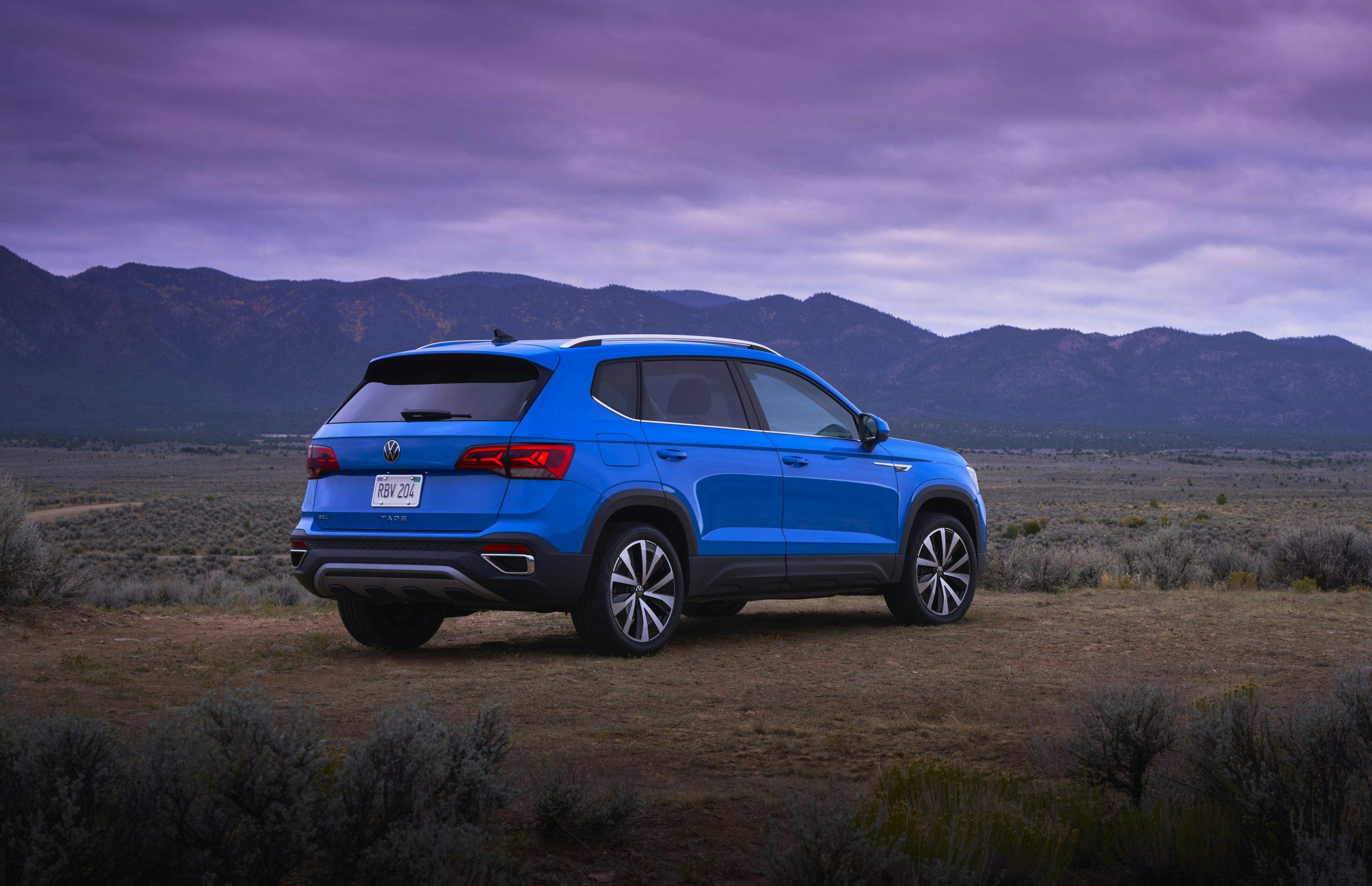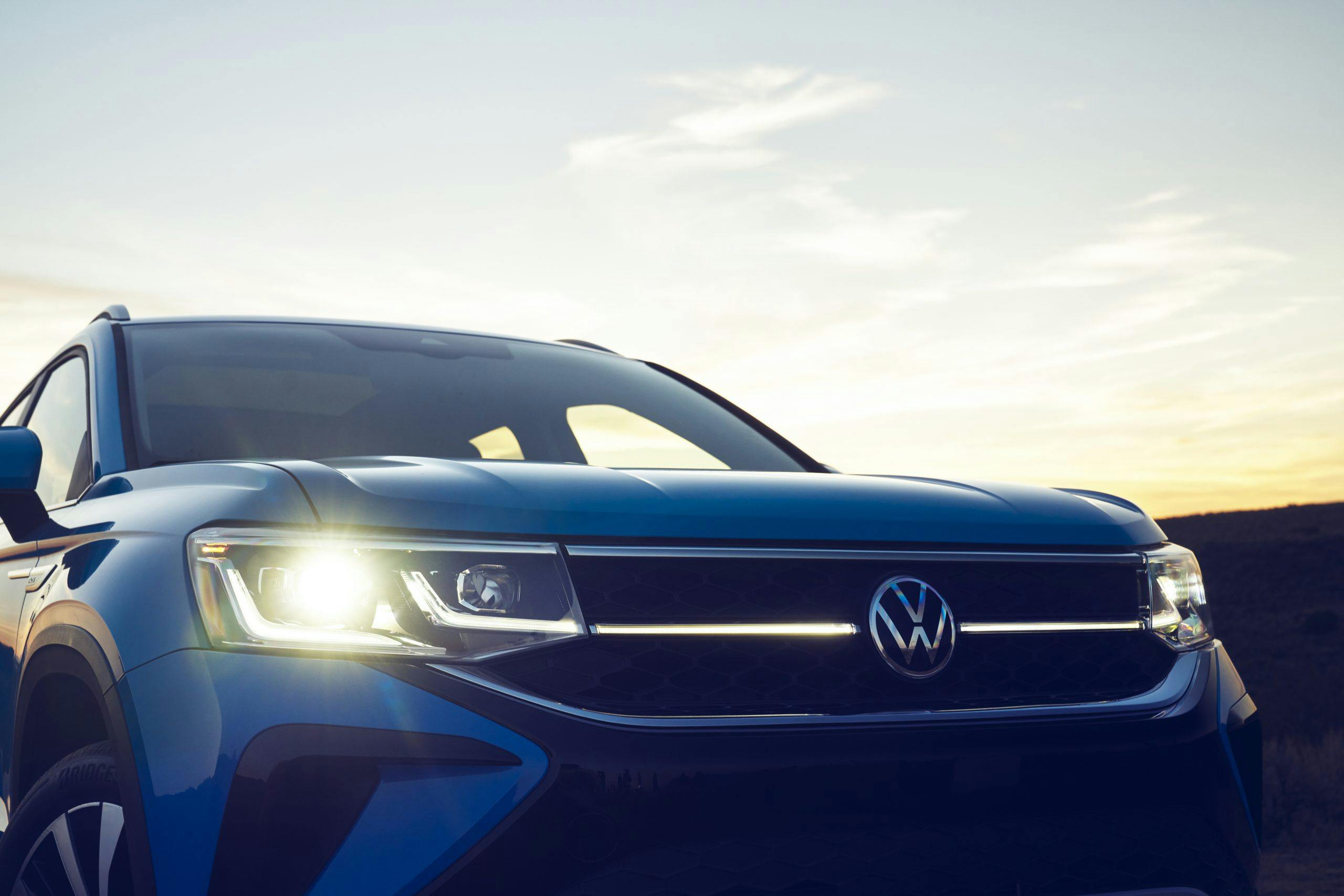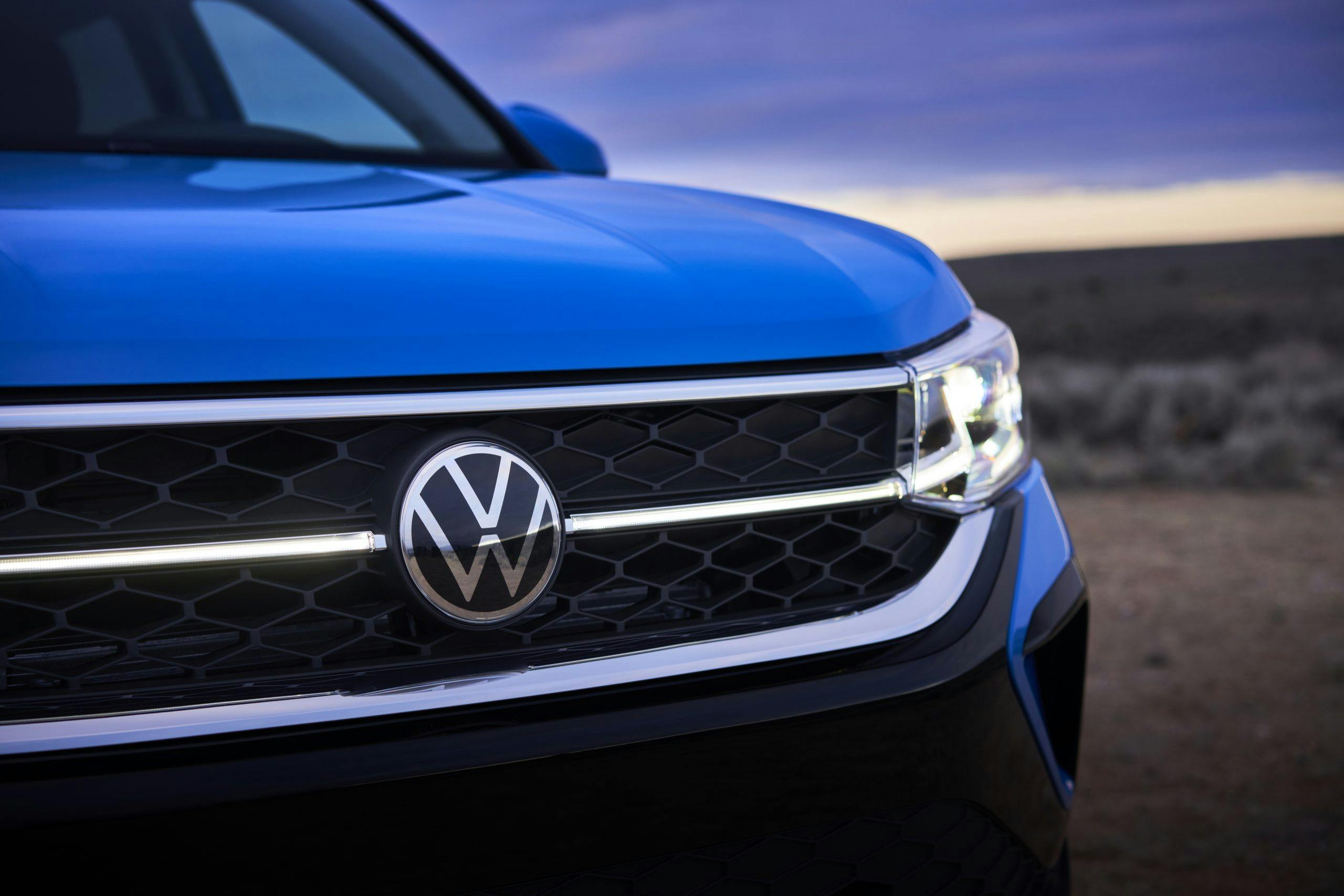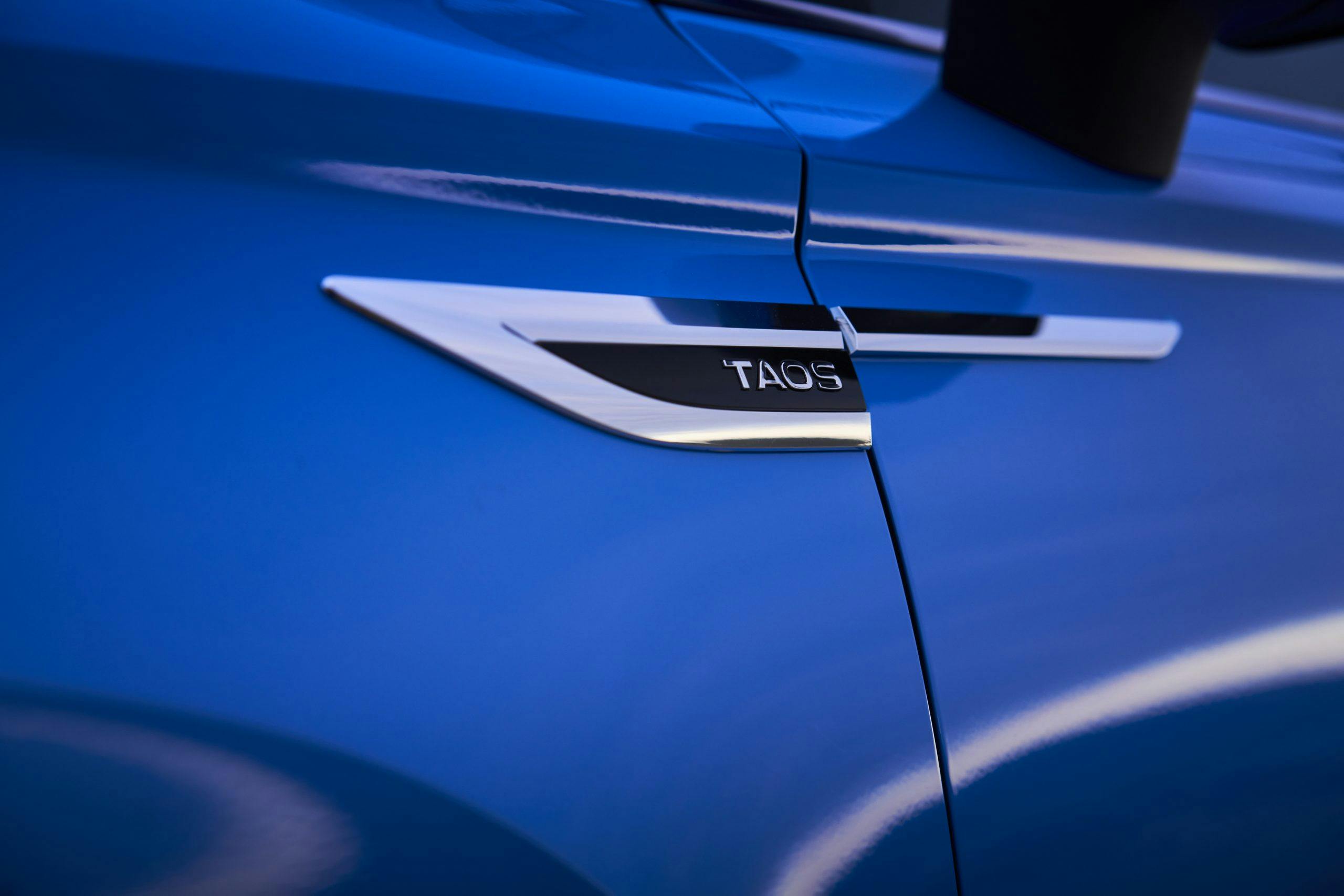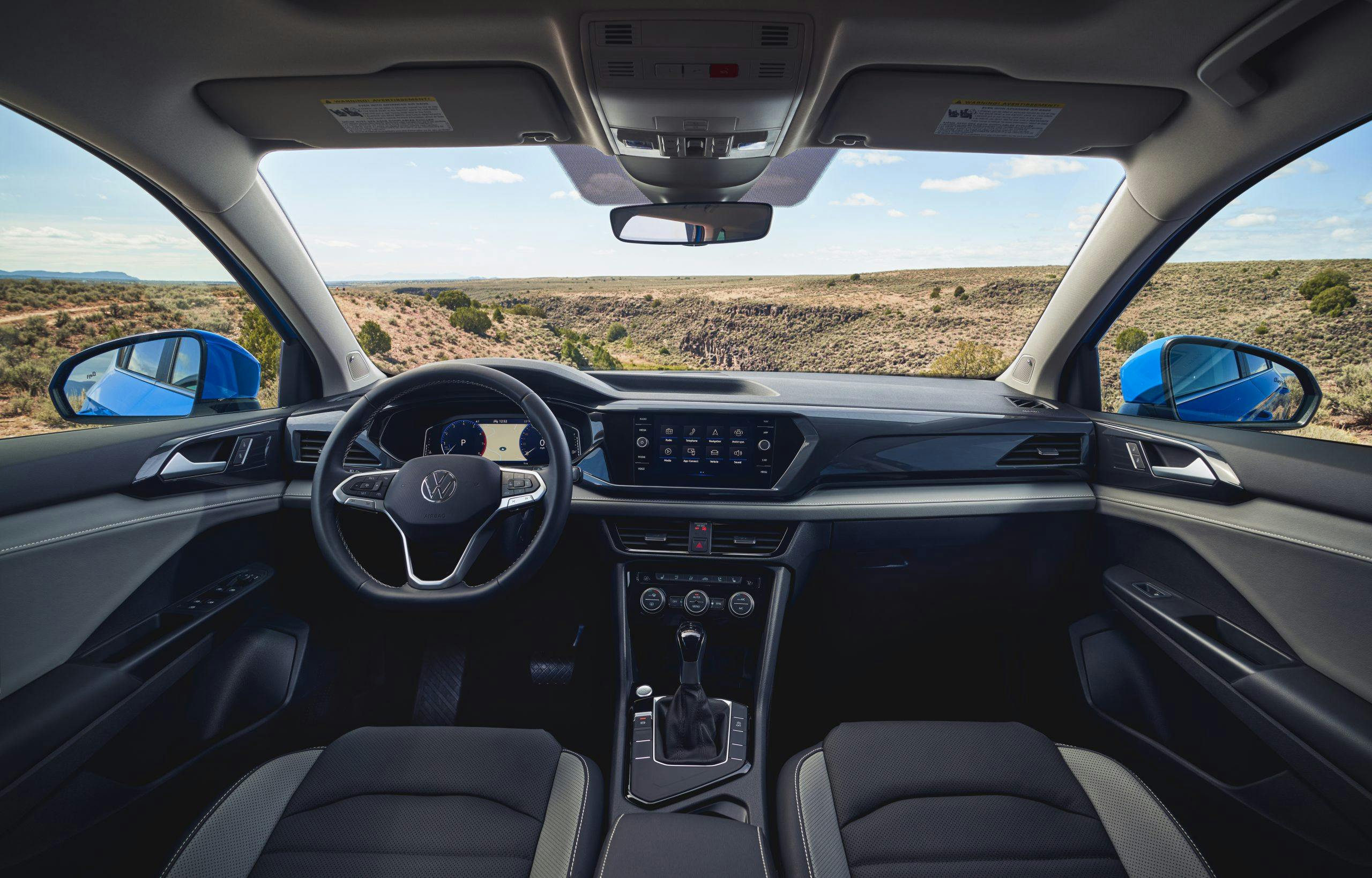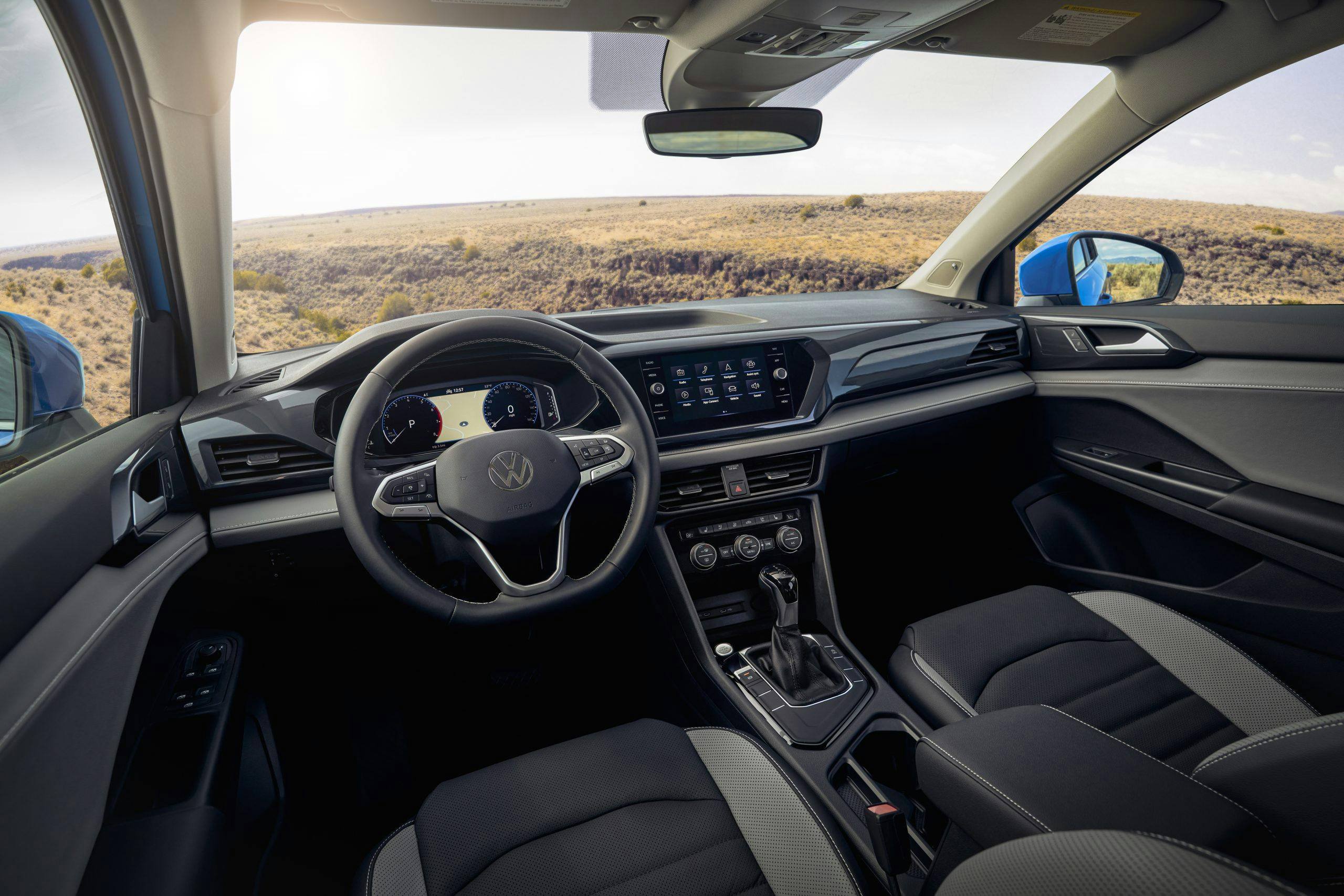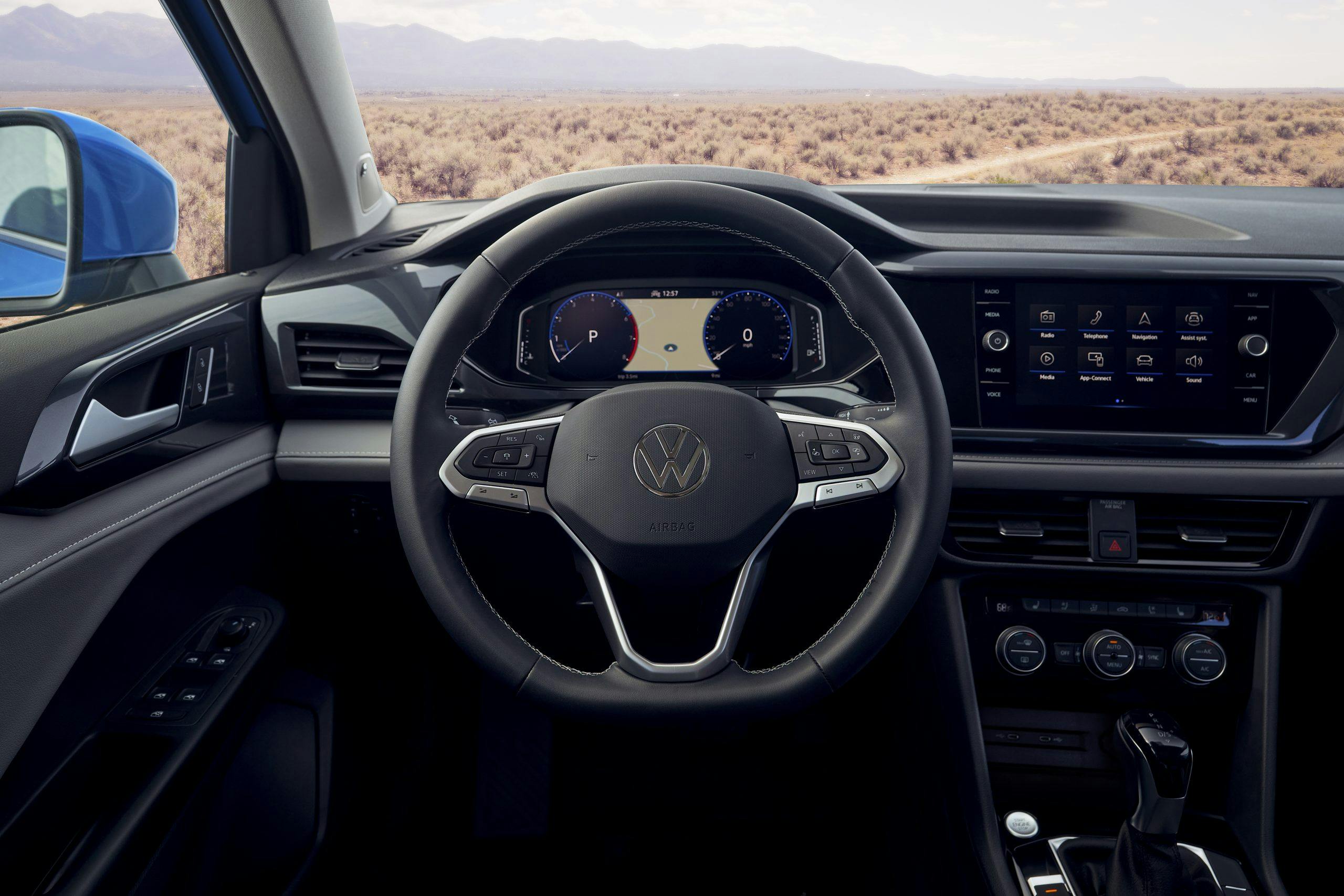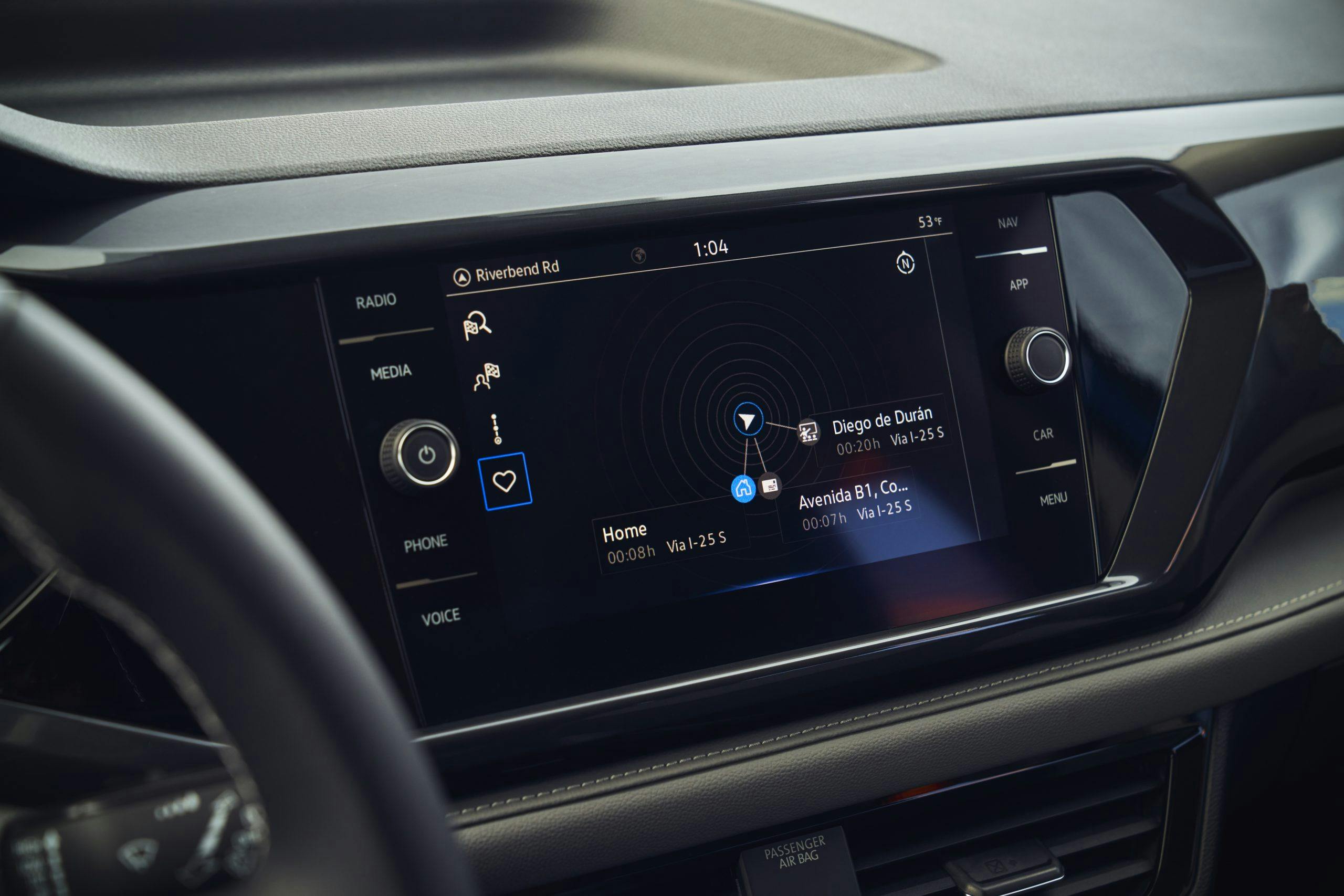Revealed: 2022 Volkswagen Taos
North America’s appetite for crossovers SUVs isn’t slowing down anytime soon, and Volkswagen is well aware of that fact. Late last year, the brand introduced the Atlas Cross Sport as its second midsize SUV in a “double-up” move to offer customers yet another high-riding, stuff-hauling sport utility. Back in 2019, VW mentioned that more doubling up was on the way, and today, we get to see the next result of this strategy. Meet the 2022 Volkswagen Taos, a compact SUV that slots below the Tiguan.
Before you scoff at VW’s apparently redundant offerings, know that over 4 million compact SUVs were sold in 2019—that’s nearly a quarter of all new vehicle sales in the U.S. last year. The pond is plenty big, and according to VW, it’s going to get bigger. The company predicts that compact SUVs will make up 28.1 percent of the U.S. retail market 10 years from now. The Taos, then, arrives not a moment too soon.
It’s a good-looking vehicle, particularly in Cornflower Blue (formerly an optional paint choice on the special-edition Golf GTI Rabbit Edition) pictured here. Squared-off wheel arches evoke its big brother, the Atlas, but the side-profile is unmistakably that of a mini-Tiguan. Up front, an illuminated line stretches laterally on either side of the VW hood badge, something we first saw in the Atlas Cross Sport. As Hein Schafer, VW’s senior vice president of product marketing and strategy, says, “light is the new chrome.”
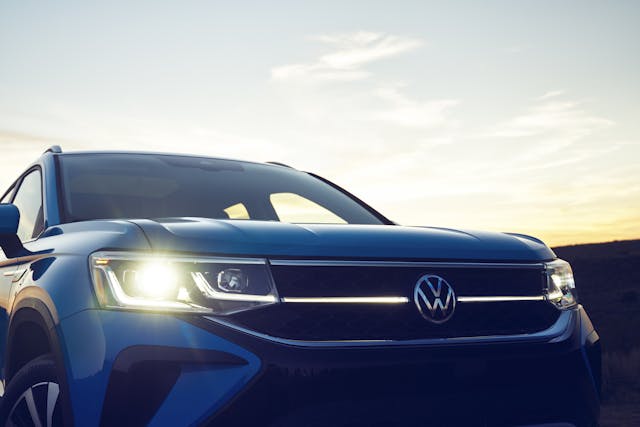
Like every other American VW offering save for the Passat, the Taos rides on VW’s modular MQB platform. Tip-to-tail, it measures 175.8 inches, some 9.3 inches shorter than the Tiguan. Wheelbase measures a stout 105.9 inches, just a skosh under the Tiguan’s 109.8-inch figure. Total passenger space in the Taos is an airy 99.9 cubic feet, just 1.6 cubic feet shy of the two-row Tiguan. Like the Atlas and the Tiguan, expect the interior of the Taos to feel positively cavernous.
Inside, clean lines and simplicity characterize a straightforward cockpit. Horizontal lines running laterally along the dash and into the door panels help create a wraparound effect from the front two seats. Two-tone seats are standard, whether you’re opting for the cloth seats in the base S trim, the leatherette seats on the mid-level SE trim, or the full leather seats on the top-rung SEL trim. VW announced that it will not offer an analog instrument cluster in the Taos—even the lowest-trim levels get an 8-inch digital cluster in place of two dials with needles. This is a great choice for a car that VW hopes will appeal to young buyers, who tend to dig all things tech.

Content packaging shows a lot of promise: All Taos models get a raft of standard equipment, including VW’s digital cockpit, wireless app-connect, push-button start, automatic headlights, and LED head and tail lamps. For the Midwesterners among us, VW plans to offer the cold weather package (heated seats may actually be the best car invention ever) on the even the low-trim S models. SE buyers can spec a panoramic sunroof, as well as 18-inch wheel packages, like the ones pictured here. Top-rung SEL customers get an available panoramic sunroof as well as 18- or 19-inch wheels. VW’s IQ.Drive suite of driver assistance technologies is available on every Taos model, S through SEL. The suite brings helpful tech like active blind-spot monitoring, lane assist, adaptive cruise control with stop and go, and forward collision warning with autonomous braking.
The Taos boasts the latest version of VW’s EA211 turbocharged four-cylinder engine. It’s the same unit currently offered in the Jetta, where it’s known for being a remarkably fuel-efficient powerplant. In the Jetta, the engine displaces 1.4 liters and offers 40 mpg on the highway, according to the EPA. In the Taos, displacement ticks up to 1.5-liters, helping increase horsepower from 147 in the Jetta to 158 in the Taos. Torque remains the same, at 184 lb-ft. Front-drive Taos models pair the engine with an eight-speed automatic. Thankfully, any trim level can be had with VW’s 4Motion all-wheel drive system, which will also get you a seven-speed DSG dual-clutch gearbox in place of the eight-speed box. All Taos (Taoi? Taoses?) will have strut-type front suspension setups; base models will receive torsion beam rear setups, while the all-wheel-drive Taos utilizes a multi-link rear. There are no plans to hybridize the vehicle currently, largely because the added cost and complexity would push the Taos too far up the price range.
Pleasantly absent is any off-road accessory package. As VW sees it, these vehicles are exclusively on-road machines, despite their healthy ground clearance and short overhangs. Yes, the world is taken with romantic ideas of overlanding right now, but we admire VW’s commitment to the everyday reality of prospective Taos buyers—who will likely be young and on a budget.
Official pricing hasn’t been released, but we can speculate. The current U.S.-market Tiguan starts at $25,965 including a $1020 destination fee, so look for the Taos to start in the low $23K range. It will be produced alongside the current Jetta and Tiguan models at VW’s Puebla, Mexico plant. Volkswagen says the Taos will be available some time between April and June of 2021. Data on pricing and performance numbers is expected closer to the launch.
We’ve decried Volkswagen as being late to the SUV market, but the Taos is VW’s fourth addition to the SUV family in just four years, joining the new Tiguan, the Atlas, the Atlas Cross Sport, and the all-electric ID.4. Credit where it’s due: Going from one offering to five in that timeframe shows how serious the brand is about this red-hot market. From what we can see, the Taos looks ready to shoulder the load at the smaller, cheaper end of the SUV spectrum.


